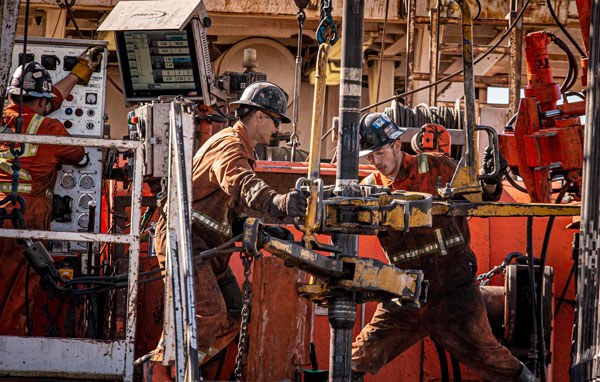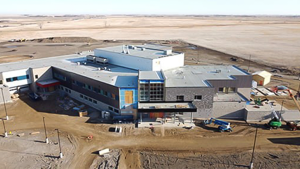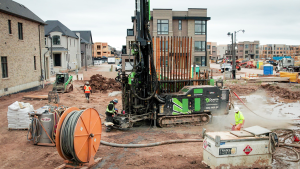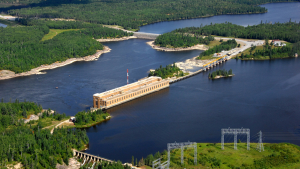The Earth’s core isn’t expected to cool down for another 91 billion years, so as far as renewable energy goes, it’s the champ.
Deep Earth Energy Production (DEEP) is looking to leverage that energy with the development of Canada’s first large-scale purely geothermal power facility, located about a half-hour’s drive southwest of Estevan in southeast Saskatchewan.
The project has been under development for more than 10 years and leverages the strengths of the province’s oil and gas industry to push the limits of directional drilling into the aquifer of the Williston Sedimentary Basin. The first well was drilled in 2018 to a depth of 3,530 metres, a Saskatchewan record. With an additional five wells, the project constitutes the six deepest wells ever drilled in the province.
Now employing a network of three kilometres of carbon steel pipe, the DEEP facility will employ an Organic Rankine Cycle closed-loop system to produce power.
Hot brine is brought to the surface and passes through a heat exchanger on its way to being re-injected back into the aquifer. In the heat exchanger a secondary fluid with a low flashing temperature — likely butane — quickly vaporizes and expands to drive a turbine. The secondary fluid remains in its own closed loop and is reused after its temperature is reduced through a series of cooling towers.
Geologist Ashley Drobot, head of business development at DEEP, notes the area may be one of the few in Saskatchewan suitable for geothermal electric power at scale. It offers permeable rock, a fluid medium to transfer energy to the surface and the depth to take advantage of the Earth’s temperature gradient — about 2.5 C hotter for every 100 metres deep.
“The depth of the sedimentary basin in this area is unique in Saskatchewan and allowed us to access brine at about 125 C,” he says. “At other locations you hit bedrock too quickly. For the DEEP project we were looking for a sweet spot of temperatures somewhere in excess of 110 C.”
Though significantly above the boiling point of water, the brine never turns to steam because it remains under pressure.
Project partner Phoenix Technology Services is inserting L80 carbon steel pipe with diameters ranging from 9 5/8 inches to 13 3/8 inches into the sediment. The drilling regimen involved about 3,500 metres of vertical drilling and then an additional 3,000 metres of horizontal drilling.
“We have to move a certain amount of water to get the energy we need to the heat exchanger in the most efficient manner possible,” Drobot says. “The horizontal length gives us that additional energy.”
Rapid advances in drilling technology have made the project possible, with each well requiring only two months to drill, as compared to about eight months 20 years ago.
Drobot credits advances in bit design and increased accuracy in directional drilling that have allowed the horizontal pipe to remain within five metres of target when it might once have shifted by as many as 40 metres.
DEEP recently announced the construction of a five-megawatt test facility that should come online in 2025, ideally followed by an additional 25-megawatt facility. With geothermal rights to 100,000 acres, the project could generate more than 200 megawatts of consistent baseload power. SaskPower and DEEP negotiated the first geothermal power purchase agreement in Canada in 2017.
Drobot notes the project should be replicable in other locations in Canada and the U.S. where brine aquifer depth is sufficient. But don’t count out the potential for geothermal heating elsewhere.
“A lot of the Saskatchewan oil and gas fields are now arguably just water fields with a little bit of an oil cut,” he says. “If you’re looking for projects to support district heating, there’s a lot you can do with 60-degree water, which pretty much opens up the southern part of the province.”
Drobot likens interest in the project to a flock of penguins standing at the edge of an ice floe.
“There’s a lot of hope and optimism that we can be successful in developing this geothermal electric project,” he says. “Once the first penguin jumps in and announce that the water’s fine, a lot more will want to jump in.”
Funding partners for the project include the Government of Saskatchewan, Natural Resources Canada and private investors.

1/2
DEEP - The drilling regimen for the project involved about 3,500 metres of vertical drilling and then an additional 3,000 metres of horizontal drilling.










Recent Comments
comments for this post are closed